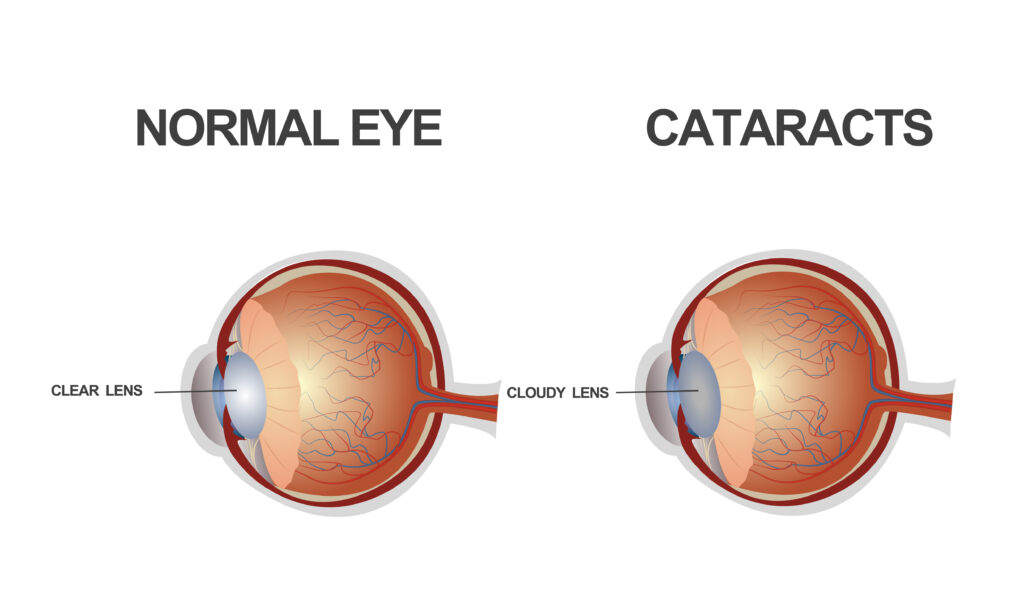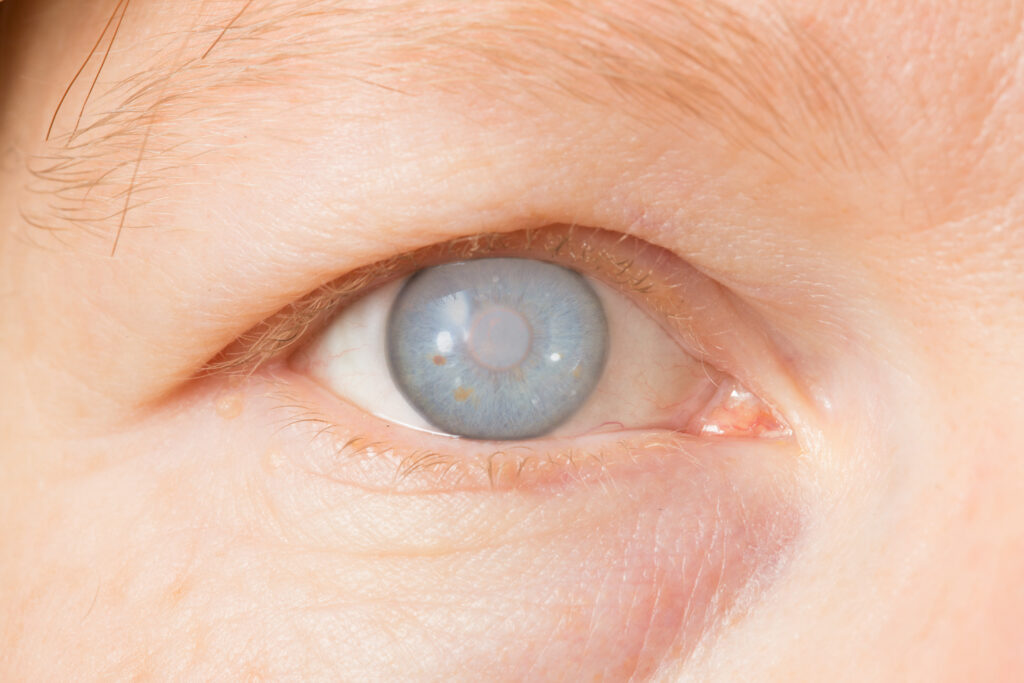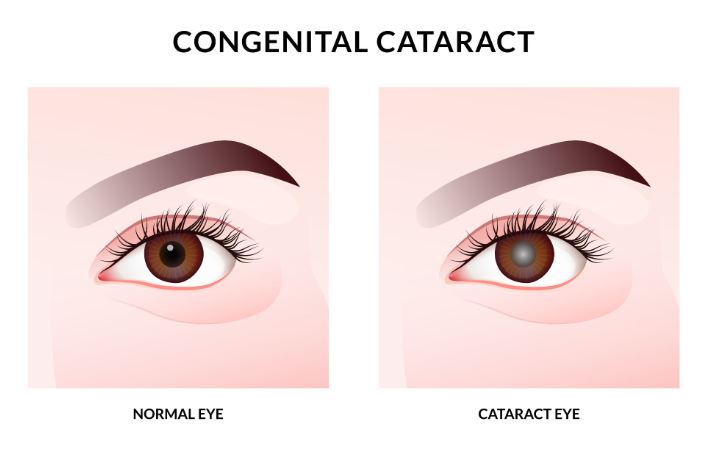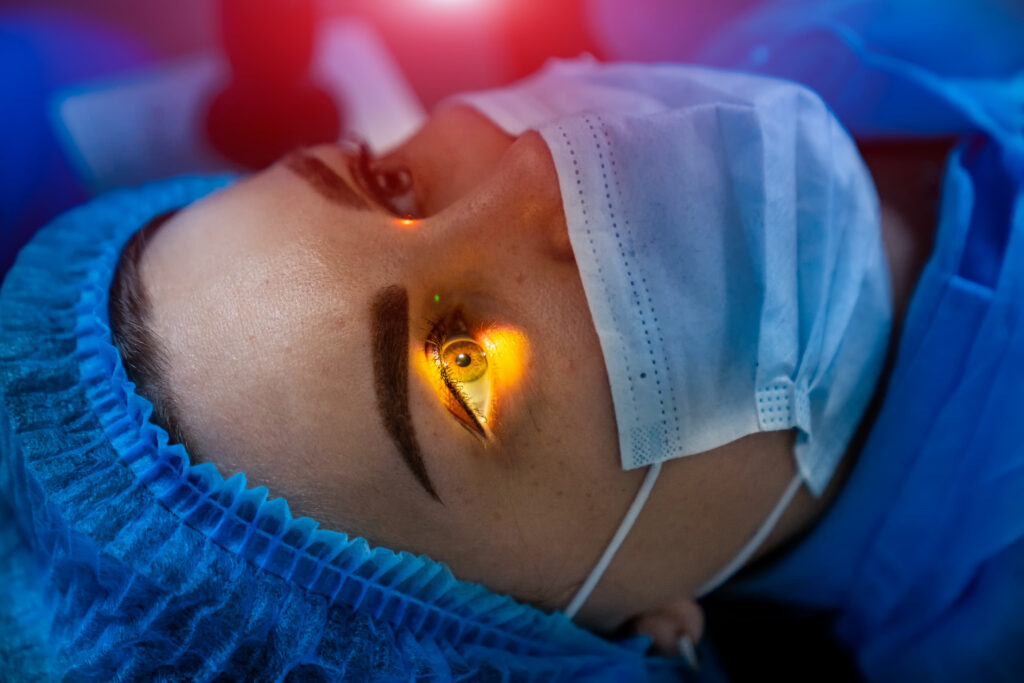A brief about different types of Cataracts

A cataract is a common ailment that causes a cloudy area in the lens of your eyes and is often a result of the natural ageing process. However, you can develop cataracts for other reasons as well. Regardless of the cause, the only treatment option for cataracts is surgery if your condition is severe. Otherwise, prescription spectacles will do the job of improving your eyesight.
Let’s look into different cataract types that occur for various reasons.

Different types of Cataracts
We can categorise cataracts based on two categories.
- What causes the cataract
- The kind of effect caused by the cataract
Category-1
- Many types of cataracts can develop in your eyes as you age, but the most common is age-related cataracts. This happens because of natural changes in the lenses of your eyes as you age.
- Traumatic cataracts usually occur after an injury to the eye, though it can sometimes take a few years for the condition to develop.
- Secondary cataracts are usually caused by an underlying disease or by taking certain medications. For example, conditions such as glaucoma and diabetes have been linked with the development of cataracts. Additionally, the usage of steroids for certain diseases can lead to cataracts.

Category-2
- Congenital cataracts, which are present from birth or develop during infancy, are less common than age-related cataracts.
- Cortical cataracts are lens opacity characterised by a wedge-shaped opacity that forms around the edges of the nucleus.
- Nuclear cataracts are lens opacity forming in the eye’s central zone, or nucleus, causing it to become yellow or brown.
- Posterior capsular cataracts are the most common type of cataract, and they usually form faster than the other two types. They affect the back of the lens, and they can cause symptoms like blurry vision and trouble seeing at night.

Treatment for cataracts
Surgery to remove cataracts is generally recommended when they begin to significantly interfere with your daily activities, such as reading or driving. It may also be recommended if cataracts prevent treating other underlying eye conditions effectively. There are two surgery options,
- Extracapsular surgery is a procedure to remove the cloudy part of the lens through an extended cut in the Cornea. An intraocular lens made of plastic is placed in the same spot as the natural lens after the surgery is complete.
- Phacoemulsification surgery, also known as phaco, is the most common and preferred form of cataract surgery. A tiny surgical cut is made in the patient’s outermost layer of the cornea. Then, the surgeon inserts a small probe into that hole. This probe emits ultrasound waves which soften and break the lens into tiny pieces and are picked up by suction.
The risks of cataract surgery are infection, bleeding, and retinal detachment; however, the incidences of those complications are less than 1%, so, no need to worry. cataract surgery is usually safe and has a high chance of success. In general, people can go home the same day after their surgery.
According to the National Eye Institute, the surgical removal of cataracts is a very common procedure that is effective in roughly 90 per cent of cases.

Prevention of cataracts
To reduce your risk of developing cataracts, follow these tips:
- Eat plenty of fruits and vegetables to improve your overall eye health.
- Quit smoking.
- Have regular eye exams.
- Sunglasses that offer protection from UVB rays should be worn outside in the sun.
- Managing medical conditions such as diabetes is essential to maintaining good eye health.

Conclusion
Age-related cataracts and other conditions are something we can’t control, but we can take measures to lower our chances of developing them. By following the steps mentioned above, you’re increasing your chances of avoiding cataracts. Always remember that prevention is better than cure.
Are you experiencing symptoms of cataracts?
It’s better to get tested and know the status of your condition from one of the most reputed eye care hospitals in Hyderabad. Book your appointment now for all eye-related services.
Your Vision Our Focus


